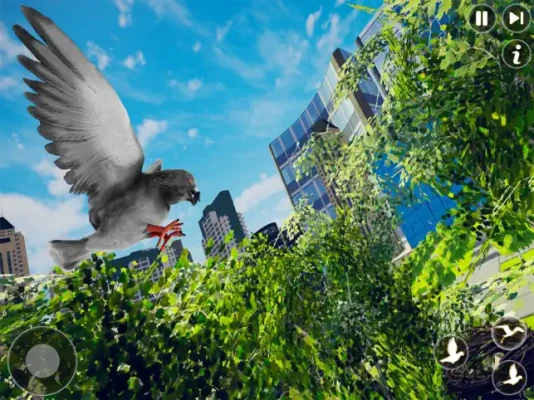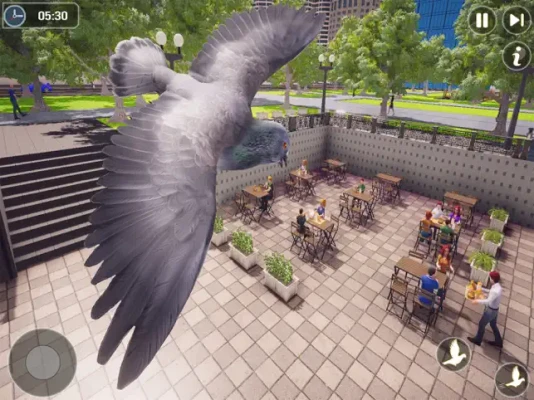
Latest Version
1.0.7
April 24, 2025
Wild Pigeon Survival Simulator
Games
iOS
137.8 MB
0
Free
Report a Problem
More About Pigeon Bird Flying Simulator
Discover the Fascinating Life of Urban Birds: Features and Survival Strategies
Urban birds have adapted remarkably to city life, showcasing unique behaviors and survival tactics. This article delves into the main features that define their existence in bustling metropolitan environments.
Soaring High: The Quest for Food
One of the most captivating aspects of urban birds is their ability to fly in search of food. These avian creatures navigate the skies, utilizing their keen eyesight to spot potential meals. From scavenging scraps left by humans to hunting insects, their adaptability ensures they thrive in diverse environments. Whether it’s a pigeon pecking at leftover crumbs or a hawk hunting in a park, the quest for sustenance is a daily adventure.
Creating Safe Havens: Nest Building
In the concrete jungle, building nests is essential for urban birds to establish their homes. They ingeniously utilize available materials, from twigs and leaves to human-made items like plastic and paper. These nests provide a safe space for raising their young, protecting them from predators and harsh weather. The choice of nesting sites often includes ledges, tree branches, and even the nooks of buildings, showcasing their resourcefulness in urban settings.
Urban Challenges: Avoiding Predators
Survival in the city is not without its challenges. Urban birds must constantly protect themselves from other wild birds and various predators. Larger birds, such as crows and hawks, pose significant threats, while domestic animals like cats can also be dangerous. To evade these threats, urban birds employ various strategies, including swift flight, camouflage, and choosing nesting sites that are less accessible to predators.
Mastering the Skies: Navigating City Landscapes
One of the most impressive features of urban birds is their ability to spread their wings and fly between towering buildings. This skill not only aids in finding food but also plays a crucial role in their daily survival. Birds like swifts and sparrows have adapted to maneuver through narrow spaces and high altitudes, showcasing their agility and precision. Their flight patterns are often a dance of grace and speed, allowing them to thrive amidst the hustle and bustle of city life.
Conclusion: The Resilience of Urban Birds
Urban birds exemplify resilience and adaptability in the face of modern challenges. From their quest for food to their ingenious nesting strategies, these creatures have carved out a niche in our cities. By understanding their behaviors and the features that define their lives, we can appreciate the vital role they play in our urban ecosystems. Observing these birds not only enriches our experience of city life but also highlights the importance of preserving their habitats amidst ongoing urban development.
Rate the App
User Reviews
Popular Apps










Editor's Choice






























